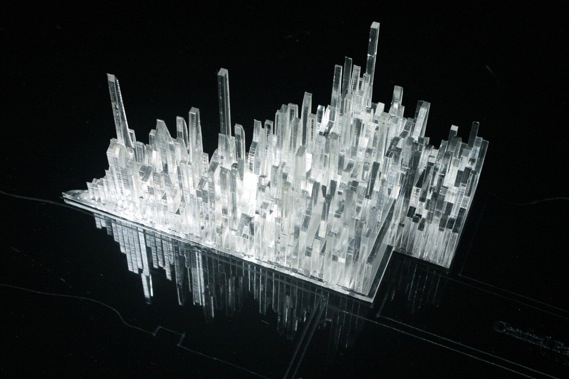Spatial Sound
- Precedent Field Method

Photo Credit: (AURAS) Facility at Penn State University
Spatial sound, or the spatialization of sound, is an academic and practiced professional field of its own. Spatial sound has an interesting history that can be dated back to the vernacular call and response work songs of sailors and early antiphony church choirs. It is more recently understood, researched and practiced in the field of electro-acoustic, electronic and computer music where sound and music is composed with the purpose of localizing sound sources in space. Since the advent and use of the loudspeaker, electronic synthesis and computer music in the 20th century, spatial sound explorations have been developed by composers.
Charles Ives’s Fourth Symphony (1912–18) and Rued Langgaard’s Music of the Spheres (1916–18) are two examples from the early 20th century that utilize the dimensions of space within their orchestral compositions. Other significant works of spatial sound include Edgard Varese’s Poeme Electronique inside the Phillips Pavilion, Karlheinz Stockhausen’s Gesang der Junglinge in 1956, John M. Chowning’s Turenas in 1972 and The Simulation of Moving Sound Sources in 1977. Iannis Xenakis’ Hibiki Hana Ma inside the Japanese Steel Federation Pavilion at the 1970 World Expo in Osaka Japan and Curtis Roads’ Spatialization of Sound Particles in 2001 also offer significant advancements to the compositional techniques and processes, as we will describe in the following paragraphs. These works utilize spatial sound in different compositional genres including, orchestral, electroacoustic, and musique concrete.
Edgard Varèse’s Poème électronique commissioned for the Philips Pavilion at the 1958 World’s Fair in Brussels, which will be discussed at length section 2.41, was another exemplar of spatial music. Poème électronique embodied Varèse’s concept of organized sound. Using a custom switching mechanism, the composition (which was on multichannel tape) was spatialized through hundreds of speakers arranged throughout the nine hyperbolic parabolas of the pavilion.
Poème Electronique by Edgard Varèse (1958) and Terretêktorh by Iannis Xenakis (1965)
Terretêktorh by Iannis Xenakis is another spatial sound composition that uses an orchestra. Terretêktorh was inspired by sounds found in nature and composed by creating paths of sound woven in space. For the performance, Xenakis placed the orchestra members and their instruments throughout the audience, allowing a tone or sonic event to travel from one space to another, in front of, behind, or straight through the audience’s space.
Karlheinz Stockhausen’s 1968 spatial composition Musik fur ein Haus is an example of spatial music that is integrated into an architectural setting. In this work, musicians performed inside one of four different rooms on two different floors of a house. Visitors could wander through the different spaces and experience the sonic composition as if it were in a gallery or museum setting. Microphones placed within each room pick up the music being played then project it through loudspeakers in the other rooms. Within a fifth room of the house, one could hear the recorded music from all four rooms simultaneously.
Music fur ein Haus by Karlheinz Stockhausen (1968)
Stockhausen describes his space specific compositions as, “requiring a very special kind of architecture” (Forsyth, 1985) where spatial music is integrated into architectural spaces specifically designed for a compositional purpose. These site specific spaces described by Michael Forsyth, are new designs for music houses that require particular types of architecture made specifically for these site and spatial specific compositions. One of these spaces Forsyth outlines is made of, “Several small auditoriums each for a particular kind of music…Polyphony of musical characters, even a Polyphony of styles” and a “space where two orchestras would be divided by a wall with mirrors on each side allowing only the conductors of the two orchestras, not the players, to see each other. A listener wanders through a space hearing a multilayered composition as if one were walking through an enormous enlarged score” where the experience might be compared to the paintings of Borsch (Forsyth, 1985) (Cott, 1974).



